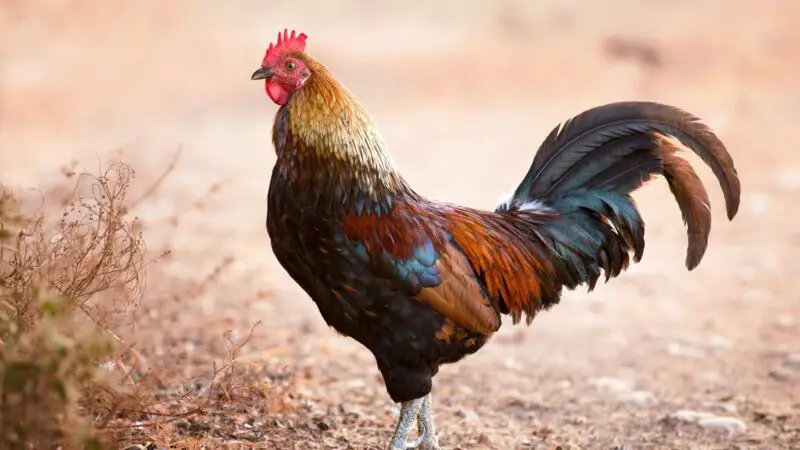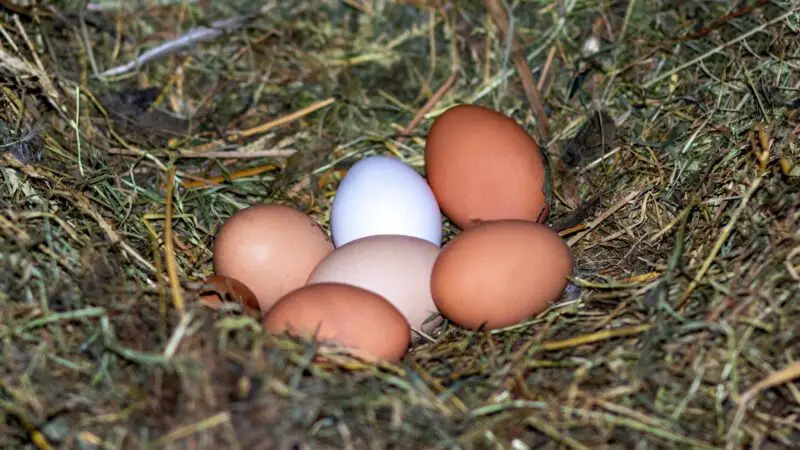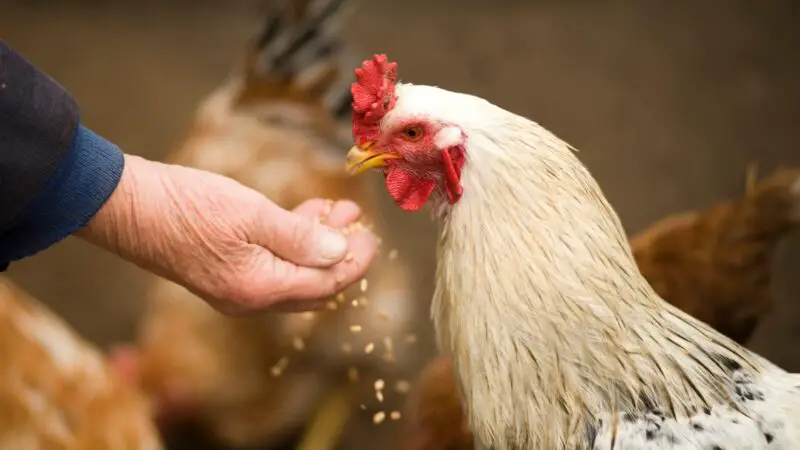Chickens are known as one of the most domesticated animals in the world. They are raised for their meat and eggs, which cater to a significant part of human food consumption.
So, where do chickens live in the wild? Chickens are found in savannahs, jungles, plains, and grasslands. They prefer to live in areas with plenty of water and food. Chickens can also be found living on islands and mountainsides.
However, they don’t tend to live in areas with a lot of water or snow. They prefer grasslands, open forests, and other pasture-like areas. Wild chickens are also at home in mountains and deserts.
Where Did Chickens Originate?

Chickens have been a part of human culture for over 4,000 years. They were first domesticated in India and China. Chickens were also kept by the ancient Egyptians to provide eggs and feathers for clothing.
Southeast Asian red junglefowl has been the primary wild ancestor of chickens for millions of years. Modern domestic chickens descended from this lineage, but with a few changes in their genetic makeup. In addition to being smaller than their wild ancestors, modern chickens are less likely to be cannibalistic and more likely to have feathers on their legs.
Related: What Is Chicken? | Information and Facts
Are There Wild Chickens Anywhere?
Wild chickens are found throughout the world, but they are most prevalent in the tropics. They are more likely to be found in savannas, grasslands, and rainforests.
Are There Any Wild Chickens Left?
You might think that all chickens have been domesticated for ages and would not be able to survive in the wild, but this is not the case. There are still plenty of species of chickens that have been living free for a long time, and they can be found in many parts of the world.
For example, you’ll find the red jungle fowl (also known as a rooster) in South America, while the blue-eared marabou stork has been spotted in Indonesia and Malaysia. You can also see white-throated wood rails in China, while North American wood turtles live near water sources like rivers and lakes.
Where Is a Chicken Natural Habitat?

A chicken’s natural habitat is the open country, grasslands, and meadows of the world. They thrive in areas with a variety of climates and habitats, like temperate regions, subtropical zones, and tropical realms.
Chickens can also survive in arid desert regions, where they find water by digging or by drinking dew from plants. A chicken’s natural environment includes wetlands like marshes and bogs, as well as forests.
What Are Feral Chickens?
Feral chickens are any chickens that were originally domesticated and have since reverted to a wild state. They are often referred to as “feral” or “wild” chickens.
Feral chickens can be found in various locations, including the rural areas of America and other countries around the world where people have released them.
Can Domestic Chickens Survive in the Wild?
Despite their domestication, domestic chickens can still survive in the wild. In fact, some breeds of chickens are much more adaptable to their natural environments than others—and the ones that are most adaptable are those bred specifically for farming conditions.
Chickens can survive in just about any habitat if they have access to food and water and given the opportunity to roost in trees at night. They can even thrive in arid areas if they have access to water sources during drought periods or other times when there’s not enough access to food or shelter during those periods.
In addition, their digestive systems are very efficient at converting food into energy—so even though it’s possible for them to live off of less water than other animals do (like humans), they still require some source of water to survive.
Where Do Chickens Come From?
Chickens are a domesticated chicken species, also known as Gallus gallus domesticus. They are one of the most common birds in the world and are very popular in many countries.
They are found in many countries around the world, like China, India, Egypt, and Pakistan. Chickens have been domesticated for centuries, and their ancestors can be traced back to 5000 BC in India.
What Happens to Chicken Eggs in the Wild?

Chicken eggs in the wild are subject to several natural and human-induced threats. Natural threats include predation by foxes, snakes, and other predators; parasitism by mites and bacteria; and dehydration from overheating from too much sun exposure. Human threats include contamination by pesticides or herbicides; theft; destruction by fire or flood; or loss due to improper storage.
How Long Do Chickens Live In Captivity?
Chickens can live in captivity for as long as 3-7 years. A hen’s lifespan is determined by many factors, including the quality of their diet, their living conditions, and the time they spend outside. Chickens have a life expectancy of about 10 years.
Can Chickens Exist Without Humans?

Chickens thrive without humans if they have access to fresh air, water, food, and shelter. They also need a safe area where they can lay eggs and breed. Chickens can find and secure these things for themselves.
How Long Does a Wild Chicken Live?
Most wild chickens have a life span of 3-7 years. This is determined by the climate they are raised in, how well they’re cared for, and how many predators they face.
How Long Have Chickens Been Domesticated?

Chickens have been domesticated for over 4,000 years. They are believed to have been first domesticated in China and India, with the earliest archaeological evidence being from around 2000 BC. Chickens have since spread across the world, with their presence documented in Europe, Africa, Oceania, and Asia.
Chickens that live in the wild adapt well to their environment and make do with what they can find. Although the majority of their population have been domesticated and raised on farms, there are still wild chickens that you can usually find in rainforests and savannah where food is accessible.
List of Sources
Origin and History of the Chicken
Thinking Chickens: A Review of Cognition, Emotion, and Behavior in the Domestic Chicken
